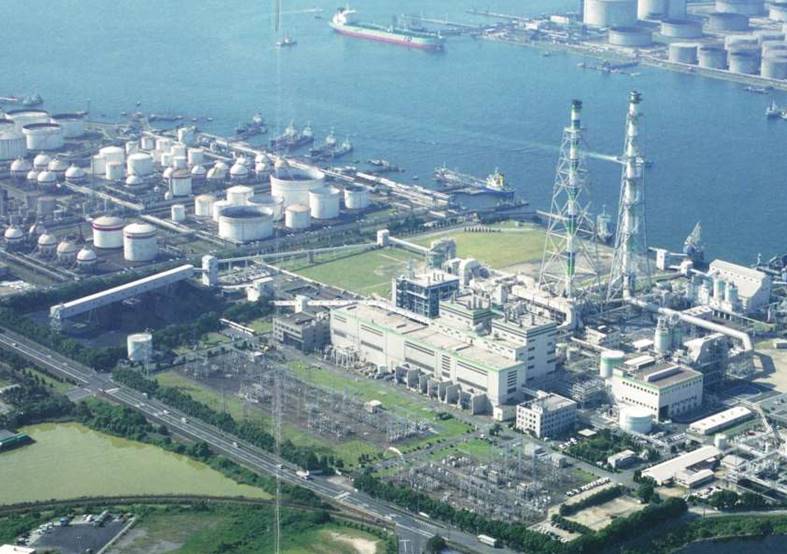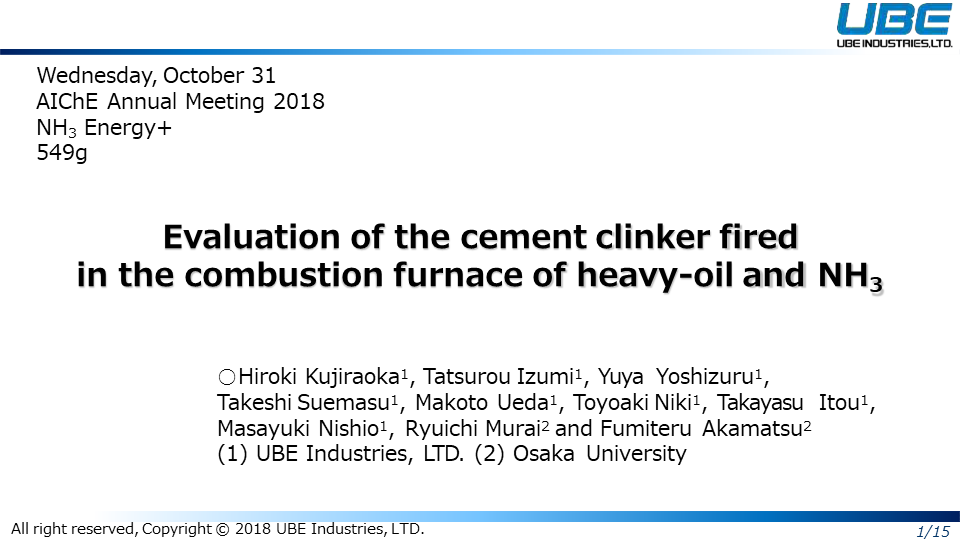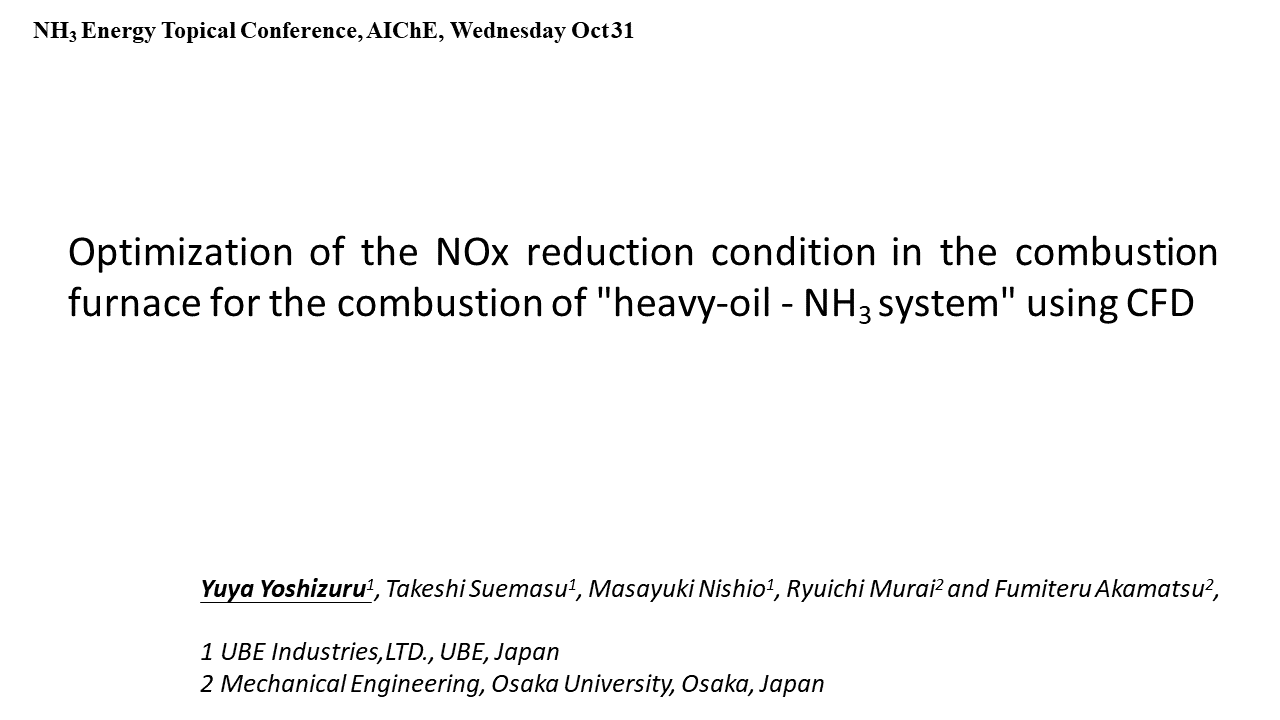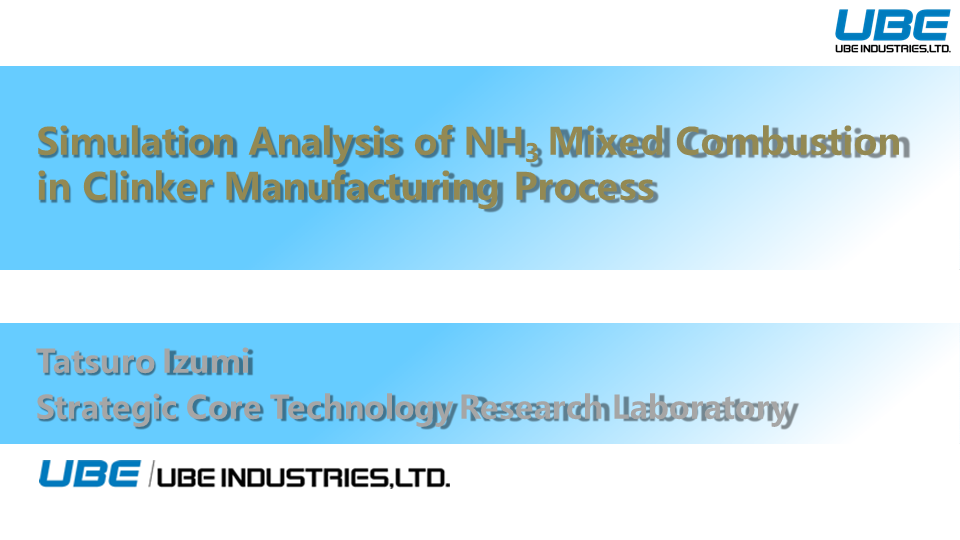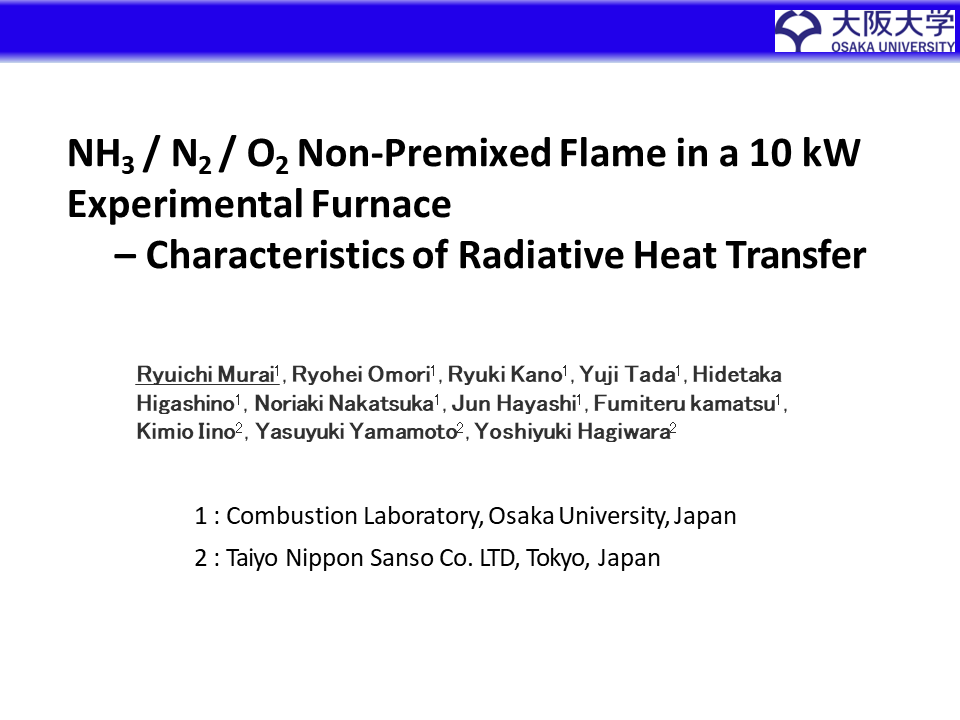Japanese glass bottle manufacturer Nihon Yamamura Glass and the University of Osaka will embark on a research project to substitute city gas fuel for ammonia fuel in glass manufacturing.
Content Related to Osaka University
Article
Nihon Yamamura Glass to trial ammonia fuel for glass manufacturing
Julian Atchison September 30, 2025
Article
A Deep Dive into SIP “Energy Carriers” Ammonia Combustion Research (second half)
Bunro Shiozawa October 13, 2020
From 2014 to 2018 Bunro Shiozawa served as Deputy Program Director of the SIP “Energy Carriers” initiative in Japan. Over the last year he has published a ten-part series of articles that describe and reflect on the research supported by the initiative. Part 4 covers ammonia combustion technologies. The first half of the article was posted on September 23, 2020, in Shiozawa's English translation. The second half follows.
Presentation
Evaluation of the Cement Clinker Fired in the Combustion Furnace of Heavy-Oil and NH3
Hiroki KujiraokaTatsurou IzumiYuya YoshizuruTakeshi SuemasuMakoto UedaToyoaki NikiTakayasu ItouRyuichi MuraiFumiteru Akamatsu
In recent years, global warming caused by an increase in CO2 emission released by combustion of fossil fuel has become a big problem. To realize a low-carbon society, active use of renewable energy and promotion of hydrogen energy are necessary. We are participating in “SIP (Strategic Innovation Promotion Program) energy carriers”, developing technology to replace 30% fossil fuel with ammonia (NH3) on the calorie basis. Assuming that NH3 is used as a thermal energy for a cement kiln, we conducted the following two basic experiments. First, we fired the clinker in the atmosphere-controlled electric furnace, calculated the reaction rate of…
Presentation
Experimental and Computational Study for Reduction of NOx Emissions in the Ammonia / Methane Co-Combustion in a 10 KW Furnace
Ryuichi MuraiRyohei OmoriTakahiro KitanoHidetaka HigashinoNoriaki NakatsukaFumiteru AkamatsuYuya YoshizuruJun Hayashi
There are severe issues on increasing amount of carbon dioxide (CO2) emission in the world. Many studies are devoted to alternative fuels. One of promising candidates is the utilization of ammonia which is zero emission of CO2, a hydrogen energy carrier, and also can be burned directly as a fuel. For direct combustion of ammonia in industrial furnaces, there were two issues which were weaker radiative heat flux and a huge amount of NOx emission compared with the combustion of methane. We already have reported [1] the solution of the former issue by using the oxygen enriched combustion. The objective…
Presentation
Optimization of the NOx Reduction Condition in the Combustion Furnace for the Combustion of "Heavy-Oil - NH3 System" Using CFD
In late years the discharge of the CO2 became the very big problem. The combustion of the fossil fuel in particular exhausts much CO2. Our project team (SIP) is intended to reduce CO2 by using NH3 (10%~30%) in substitution for heavy oil. The ‘SIP energy carriers’ was launched in 2014 (SIP: Strategic Innovation Promotion Program). Ammonia direct combustion team was formed. We conducted a co-research program with Osaka University in this project. We performed experiment of heavy oil – NH3 mixed combustion in the 10kW furnace. As the results, we obtained much experimental data. When we were combusted NH3 and…
Presentation
Simulation Analysis of NH3 Mixed Combustion in Clinker Manufacturing Process
Tatsurou IzumiHiroki KujiraokaYuya YoshizuruTakeshi SuemasuMakoto UedaToyoaki NikiTakayasu ItouMasayuki NishioRyuichi MuraiFumiteru Akamatsu
Recent years, the action for the low-carbon society becomes active all over the world. NH3 has potential to become the free-carbon energy source. In SIP project, that Cabinet Office started, we work on the technology development applying NH3 to the field of industrial furnace (SIP: Strategic Innovation Promotion Program). In this study, we evaluated the effect of NH3 use in the cement clinker manufacturing process. Cement manufacturing is one of the fields of industry to exhaust large amounts of CO2. As past works, we studied for the reduction of heat consumption rate, troubleshooting and so on by using kiln operation…
Presentation
NH3 / N2 / O2 Non-Premixed Flame in a 10 kW Experimental Furnace – Characteristics of Radiative Heat Transfer
Ryuichi MuraiRyohei OmoriRyuki KanoYuji TadaHidetaka HigashinoNoriaki NakatsukaJun HayashiFumiteru AkamatsuKimio IinoYasuyuki YamamotoYoshiyuki Hagiwara
There are severe issues on increasing amount of carbon dioxide (CO2) emission in the world. Many studies are devoted on alternative fuels. One of superior candidates is the utilization of hydrogen energy which can realize a low-carbon and hydrogen-based society. Ammonia might play an important role which is zero emission of CO2, and is useful for hydrogen energy carrier as a clean energy. Additionally, ammonia is an easily-liquefiable fuel with pressure of about 0.86 MPa and temperature of 293 K. Commercially, ammonia is produced in large quantity by the Haber–Bosch process. It is also to be produced by using catalyst…
Presentation
Effects of the Thickness of the Burner Rim, the Velocities of Fuel and Air on Extinction Limit of Ammonia Coaxial Jet Diffusion Flame
Yohei IshikawaJun HayashiHiroyuki TakeishiTakahiro OkanamiKimio IinoFumiteru AkamatsuYasuyuki YamamotoYoshiyuki Hagiwara
Ammonia is regarded as one of the alternative fuels because CO2 doesn’t emit during the combustion process of ammonia. Ammonia also has advantages in storage and transportation. In addition, ammonia has a potential to be a “hydrogen carrier” because of high amount of hydrogen content. However, there are several combustion related problems such as the low flammability, the low radiative power and the high NOx formation. To use ammonia as a fuel, therefore, it is necessary to understand the fundamental phenomena of the combustibility of the ammonia such as laminar burning velocity, strength of the radiation and extinction limit. Since…
Presentation
Detailed Observation of Coal-Ammonia Co-Combustion Processes
Coal-fired power generation is supplying about 30% of the world’s primary energy. Almost all of coal-fired power plants in Japan employ the pulverized coal combustion method. In the pulverized coal combustion, coal is pulverized into a powder of several tens of microns. This method enables to burn coal effectively because of the large surface to volume ratio. Pulverized coal particles are supplied to the actual boilers with primary air whose Air/Coal ratio (mass flow rate of primary air/mass flow rate of pulverized coal) is set to 2.0. Co-combustion of coal with ammonia has been studied with the aim of reducing…
Article
SIP "Energy Carriers" video: ammonia turbines, industrial furnaces, fuel cells
Trevor Brown October 13, 2017
To demonstrate the progress of the SIP "Energy Carriers" program, the Japan Science and Technology Agency last week released a video, embedded below, that shows three of its ammonia fuel research and development projects in operation. R&D is often an abstract idea: this video shows what it looks like to generate power from ammonia. As it turns out, fuel cells aren't hugely photogenic. Nonetheless, if a picture is worth a thousand words, this will be a long article.
Presentation
Characteristics of Ammonia / N2 / O2 Laminar Premixed Flame in Oxygen-enriched Condition
The problems of ammonia fuel are a low combustion qualities compared with the combustion qualities of hydrocarbon fossil fuels. In this study, the laminar burning velocity was used as the indicator of the combustion quality. Since the laminar burning velocity of ammonia fuel is low compared with that of other fossil fuels, it is necessary to increase the combustion quality in order to utilize the ammonia as an alternative fuel in conventional combustion systems. In this study, the oxygen-enriched combustion was applied to an ammonia/N2/O2 premixed flame for achieving higher burning velocity. The effects of the oxygen-enriched combustion on the…

